Nature has taken care of some of the invasive trees we had in our yard, and we’re working on the rest of them. Invasive trees have a disproportionate impact since they live longer than herbaceous plants or shrubs, and so they’ll be spreading their seeds for that many more decades. It’s good to make their removal a priority, though of course, it’s the most difficult and/or expensive type of invasive to remove.
Invasive trees that FORMERLY infested our property
Bradford pear (Pyrus calleryana ‘Bradford’)
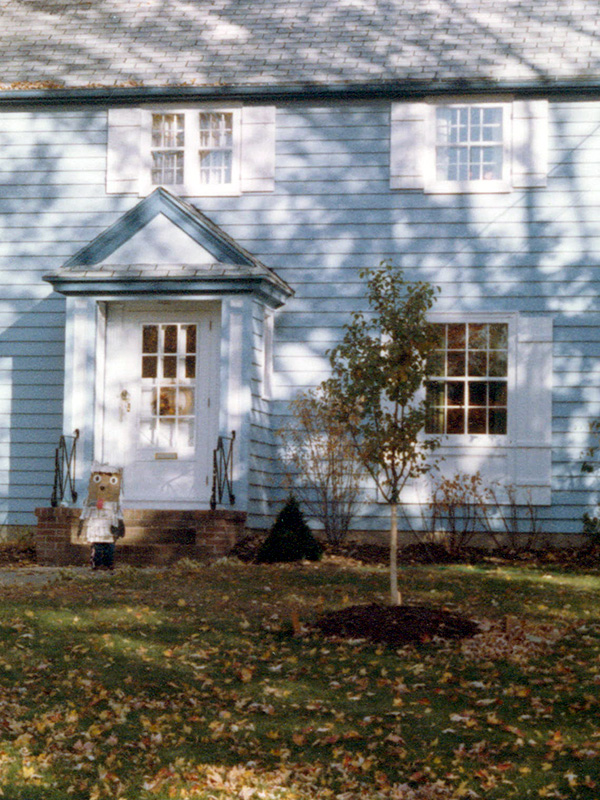
As young homeowners, we proudly took a photo of our newly-planted Bradford pear
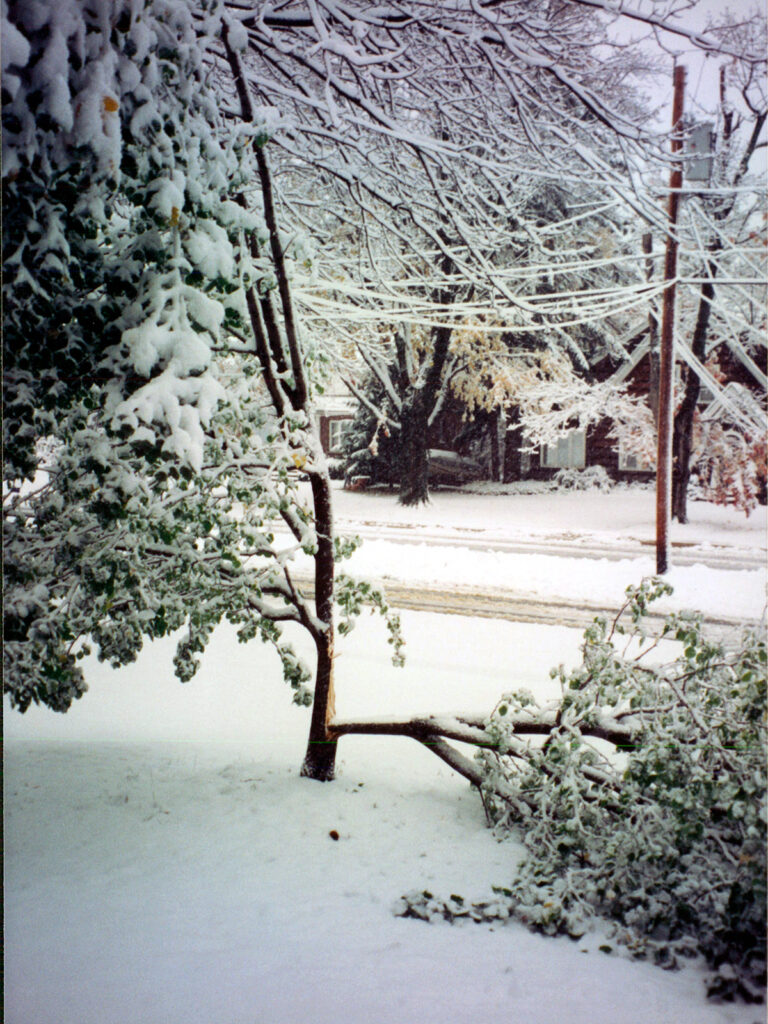
But one Halloween night, we had an early snow that split our nicely growing tree.
Losing that tree first seemed like a tragedy, but later, after we learned about its dark side, we felt lucky that nature had taken care of the problem for us.
For a while, people were reluctant to plant Bradfords because they had acquired a reputation for splitting like this, but then newer cultivars were said to have solved this problem. This doesn’t solve the problem of their invasiveness, though, or the fact that they don’t provide anything for wildlife, except perhaps for that other scourge, the invasive European starling, which do eat the “pears” I’m told.
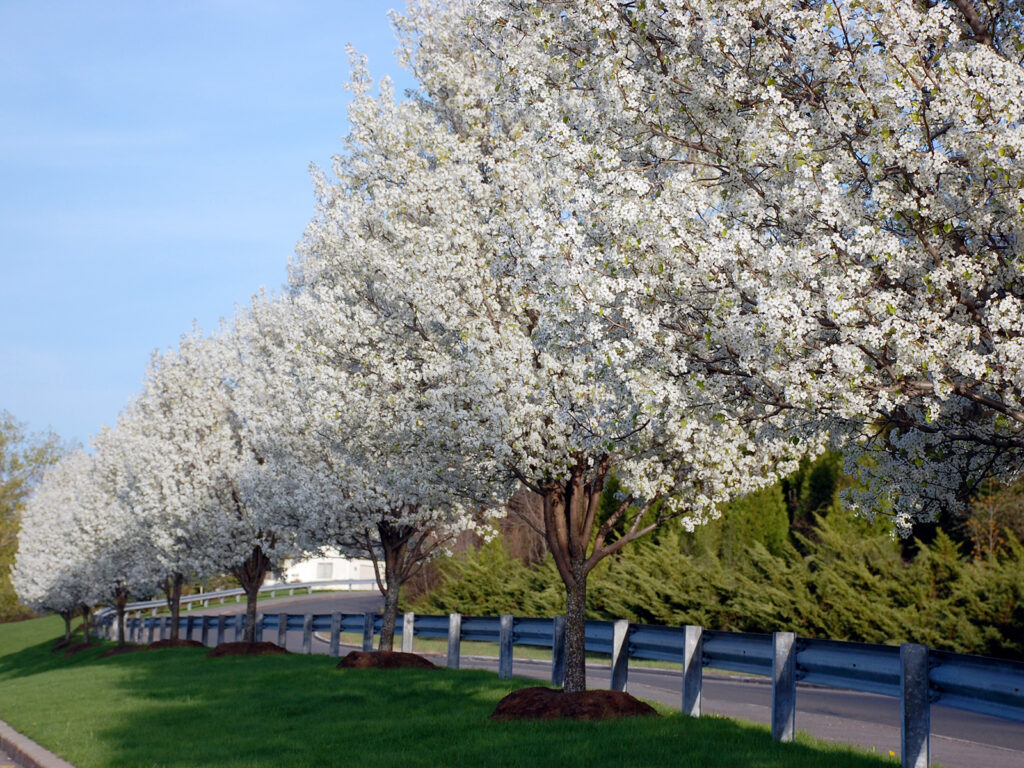
This is but one of the many local examples of how Bradford pears are used to “decorate” our public spaces. We pass this group of trees on our frequent walks to the grocery store.
Of course, they may be attractive in this setting, but just because a tree is pretty from people’s point of view doesn’t make them a wise choice. Bradford pears are increasingly spreading into natural areas, and they’re poor substitutes ecologically for the native trees that were there before.
More information on Bradford pear:
- Univ. of Maryland Extension: Bradford pear
- WRAL.com: Bradford pear “bounty” program paused after overwhelming number of requests
Norway maples (Acer platanoides)
Another blessing — though very well-disguised — was the legendary (at least to Central New York) Labor Day Storm of 1998. It removed our Norway maples for us and eliminated part of the old silver maple on the side of the house. Though native, silver maples aren’t a particularly useful tree. (Unfortunately, the silver maple limb also damaged two or our cars and totaled our new van.)
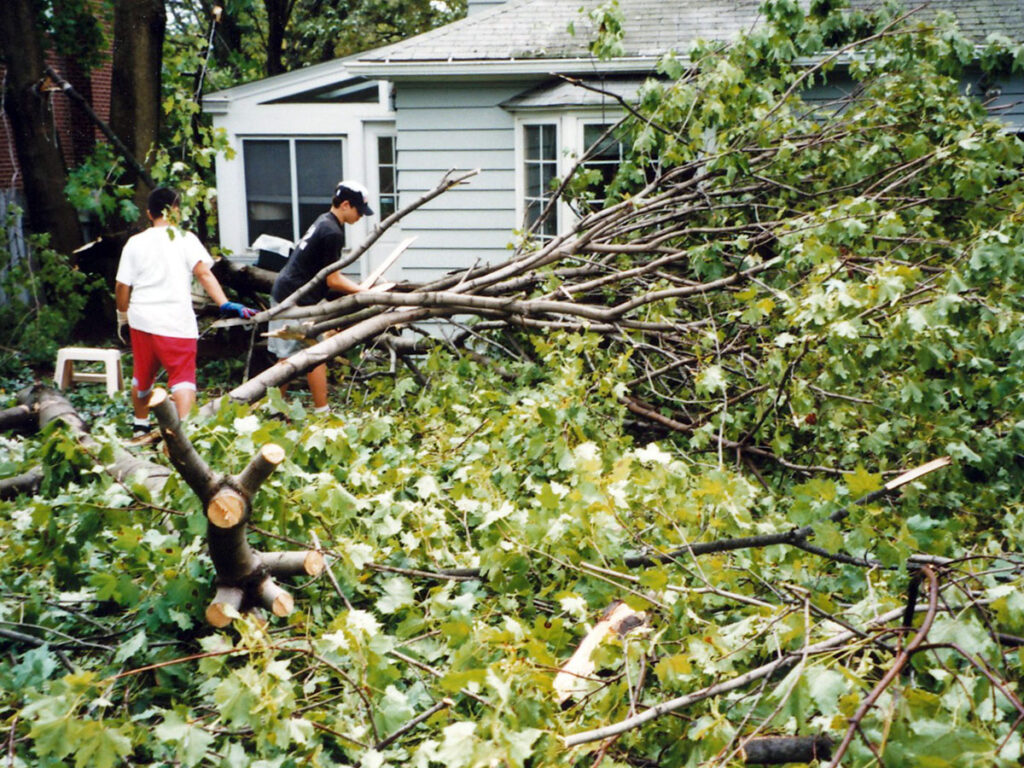
Our young teen son and his friend “dismantled” all of these trees with small tree pruning saws. It was a big adventure for them. Ah, to be young!
Norway maple or sugar maple?
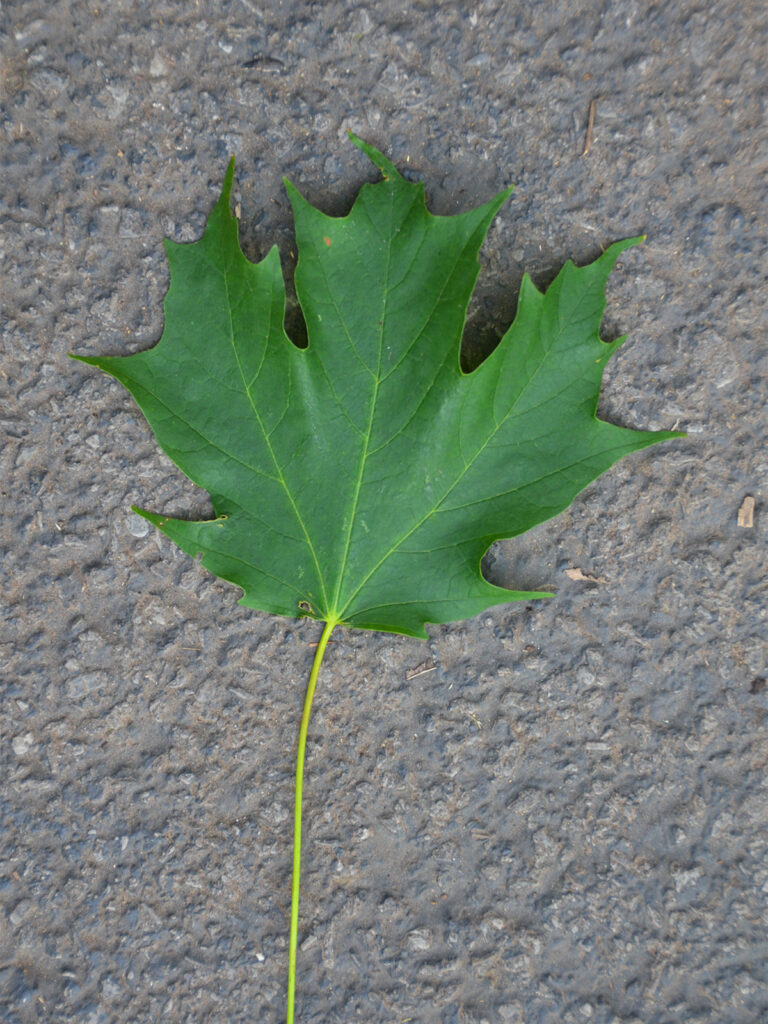
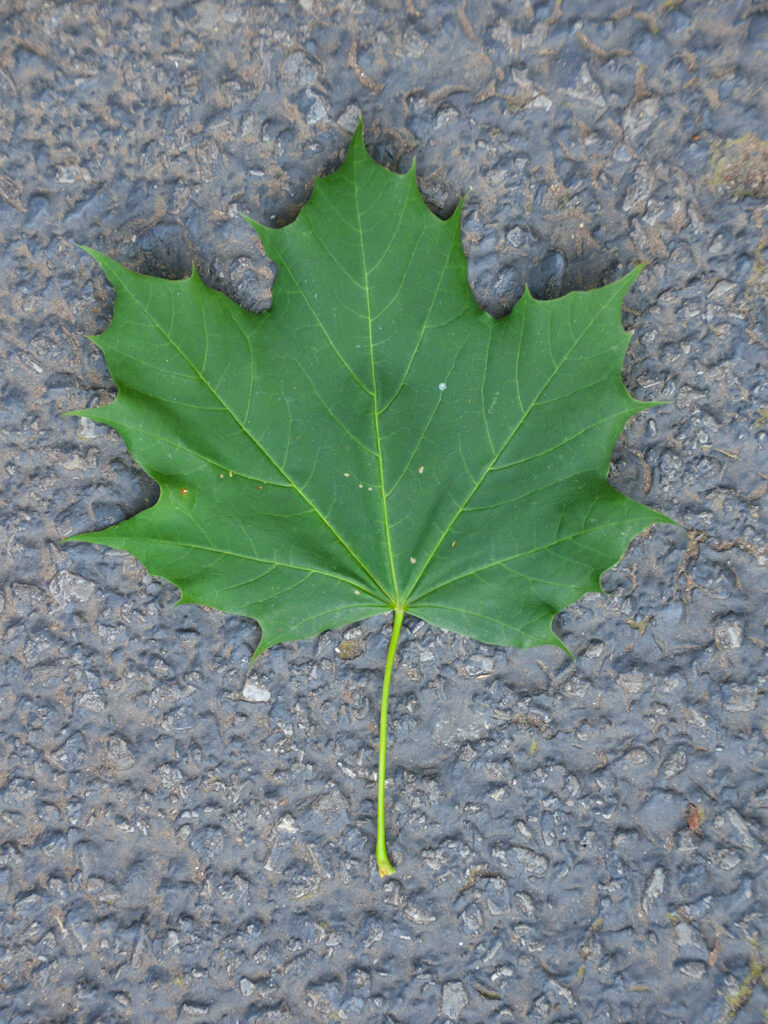
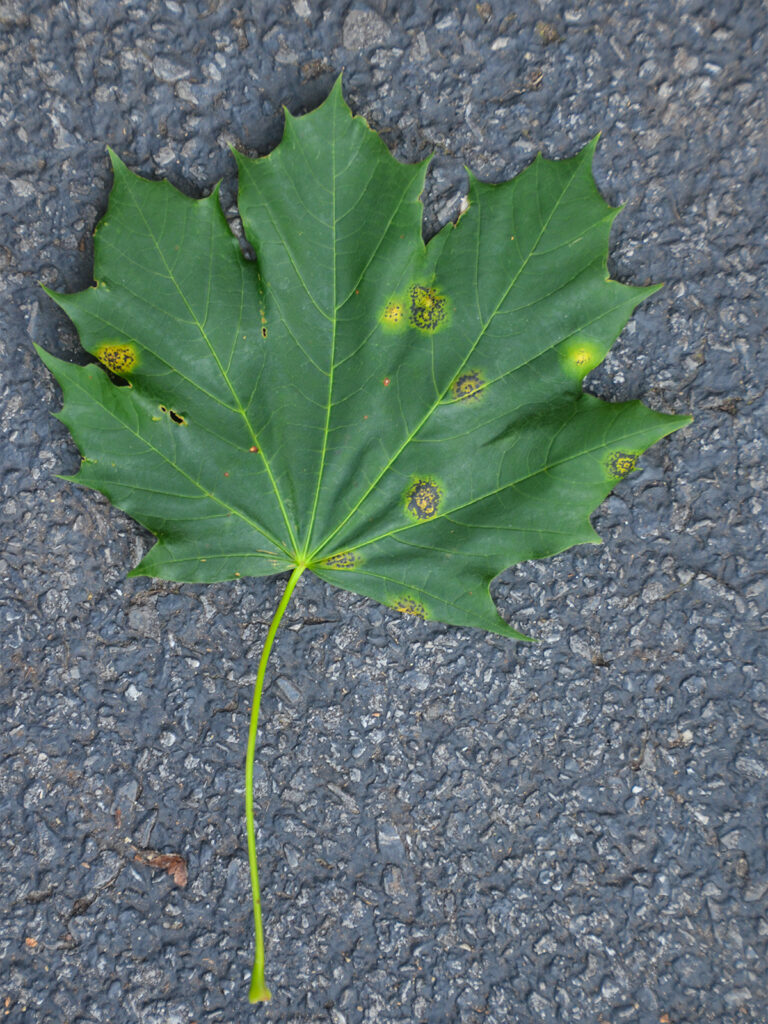
- Norway maple leaves: typically 5 – 7 lobes and sometimes has tar spot caused by fungi;
- Sugar maple leaves: usually 3 – 5 lobes; the indented portion between the lobes is more rounded.
Invasive information on Norway maples
Kousa dogwoods (Cornus kousa)
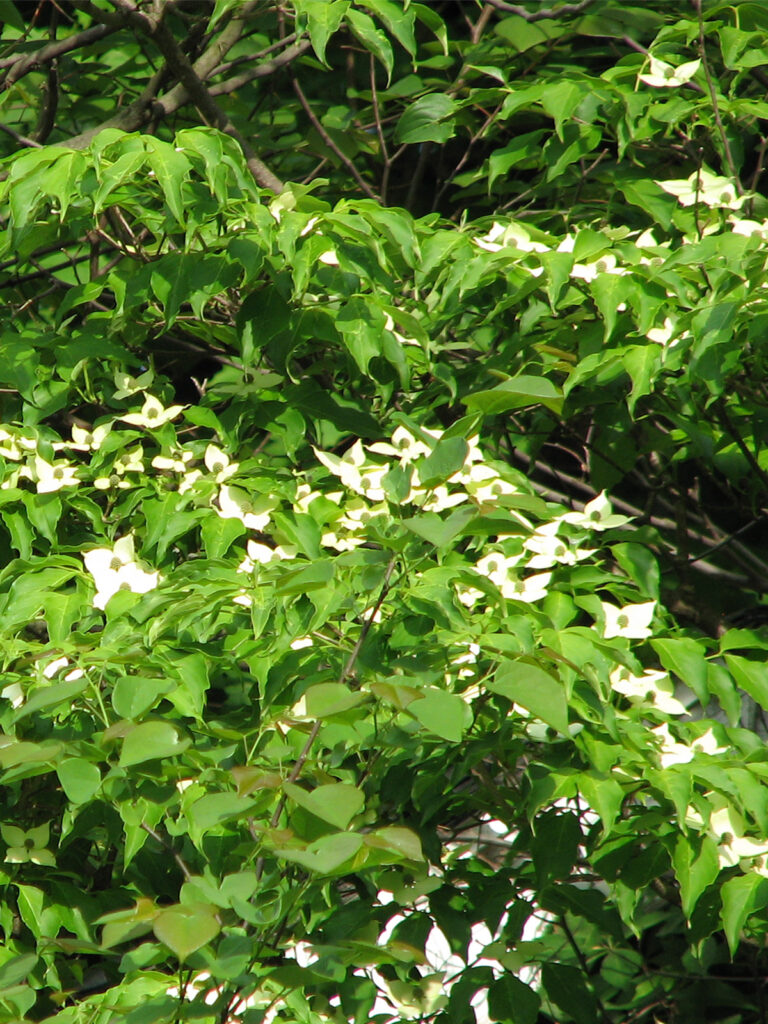
Kousa dogwood is an especially popular plant that also is considered to be an invasive plant. It’s also invasive in the sense that it’s invading our suburbs, institutional grounds, and other public areas by being so frequently planted. It takes up a lot of space, giving nothing back.
It’s a disaster for birds since its berries first, are too big for our native birds, and second, are poor substitutes for the nutritious native dogwood berries.
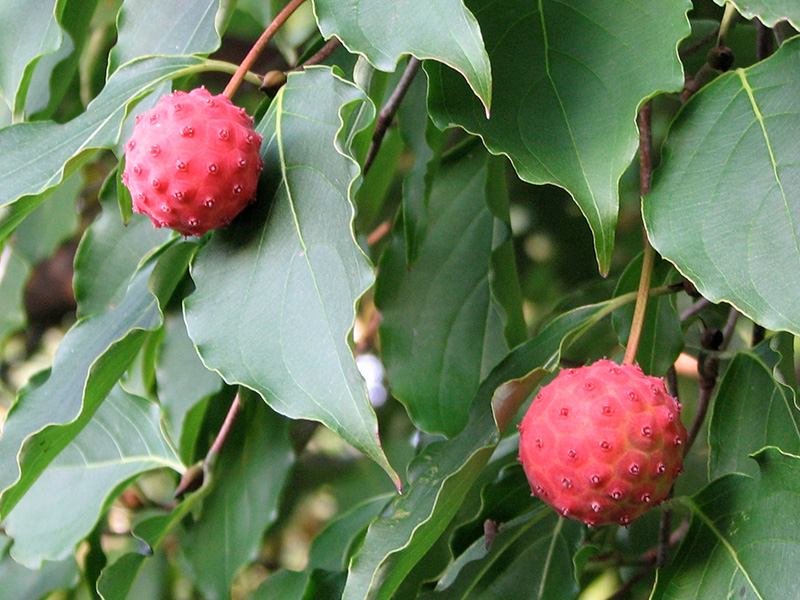
This kousa berry is very large. When we bought this plant about 30 years ago, I thought it was wonderful that it had such big berries. (Where kousa dogwoods are native, monkeys eat the berries.) Even more for the birds, right?
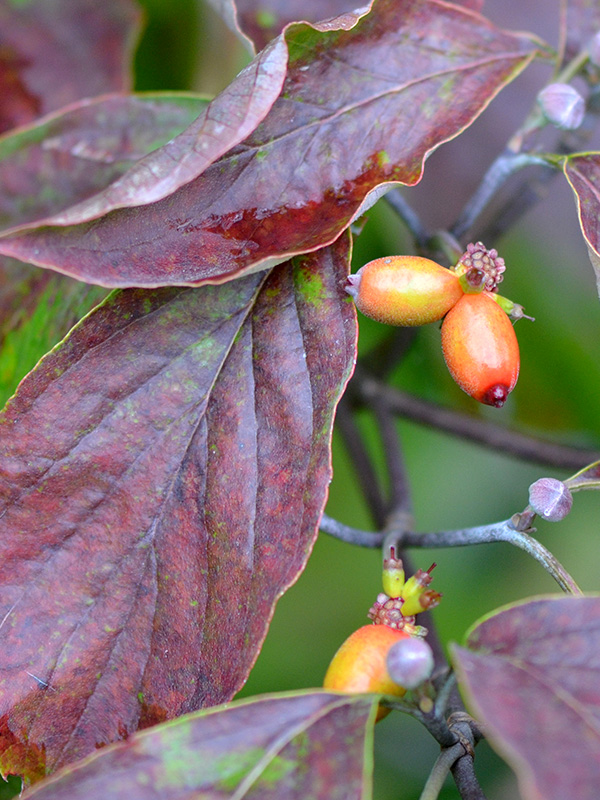
No! Our native birds co-evolved with much smaller berries, like the size of the flowering dogwood (Cornus florida) [pictured] or the pagoda dogwood (C. alternifolia) berries — berries small enough to just swallow whole, which they do.
When you think about all the millions of kousa dogwoods planted instead of native dogwoods, you can imagine the loss to our birds. In fact, it’s hard to find native dogwoods at garden centers, partly because native dogwoods now have some disease problems — ironically thought to be due to diseases brought in by the Kousa dogwoods! People also like the flowery display of the Kousa, one that’s less likely to be frostbitten since it blooms a bit later than the natives. Again, choosing “eye candy” for people over creating a healthy planet to leave our children.
- Learn more:
Resources
- NYS DEC:
- Citizens for Lexington Conservation:
- Watch out for Tree of Heaven – lists native alternatives
- Choose Natives:
- NY Times:
- Piedmont Env. Council:
- Interview with Doug Tallamy: Did invasives-damaged trees cause more power outages from superstorm Sandy? (2012) – 1 min video
Reflections
Most of the trees we plant will outlive us — choose wisely; choose indigenous [i.e. native]. … It’s impossible to “deadhead” a tree; non-indigenous trees may produce seeds for a hundred years or more … Indigenous species of trees in just ten genera (oaks, willow, and cherries are the top three) provide food for well over a thousand species of butterfly and moth caterpillars. Before choosing a new tree, consider how many life forms, in addition to humans, will be able to use it over the next hundred years.
~ Carolyn Summers, Designing Gardens with Flora of the American East, p. 49
